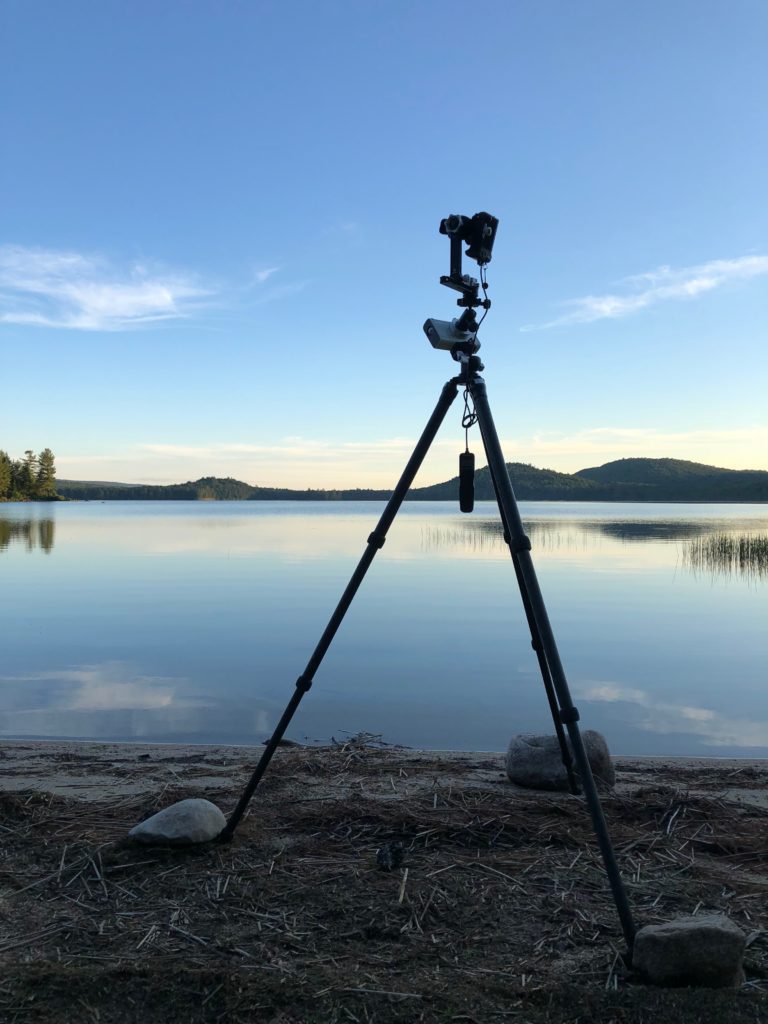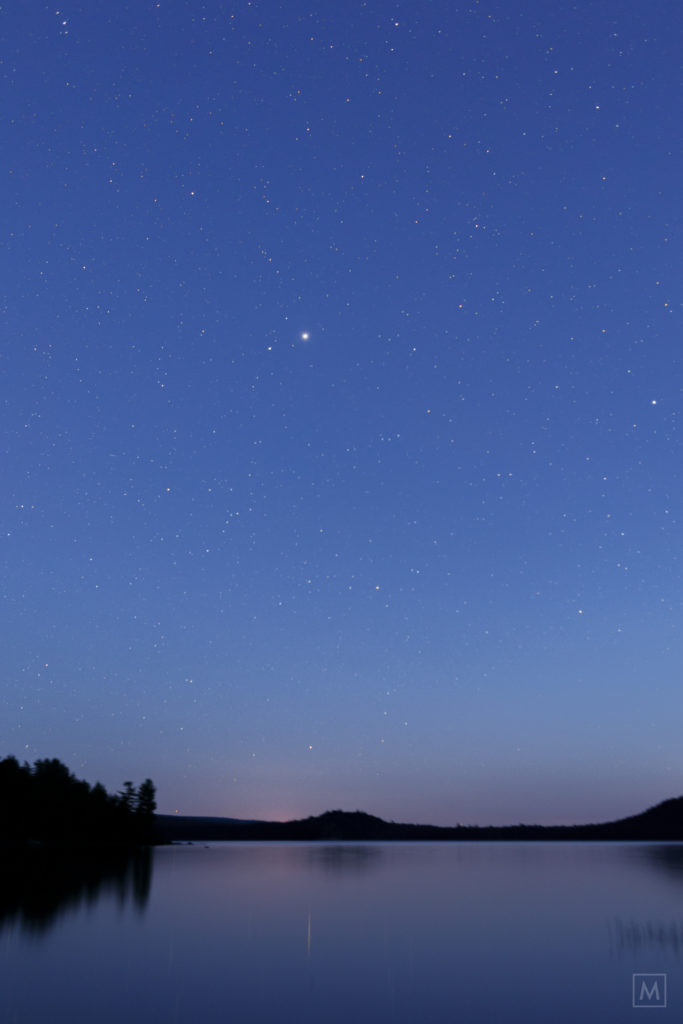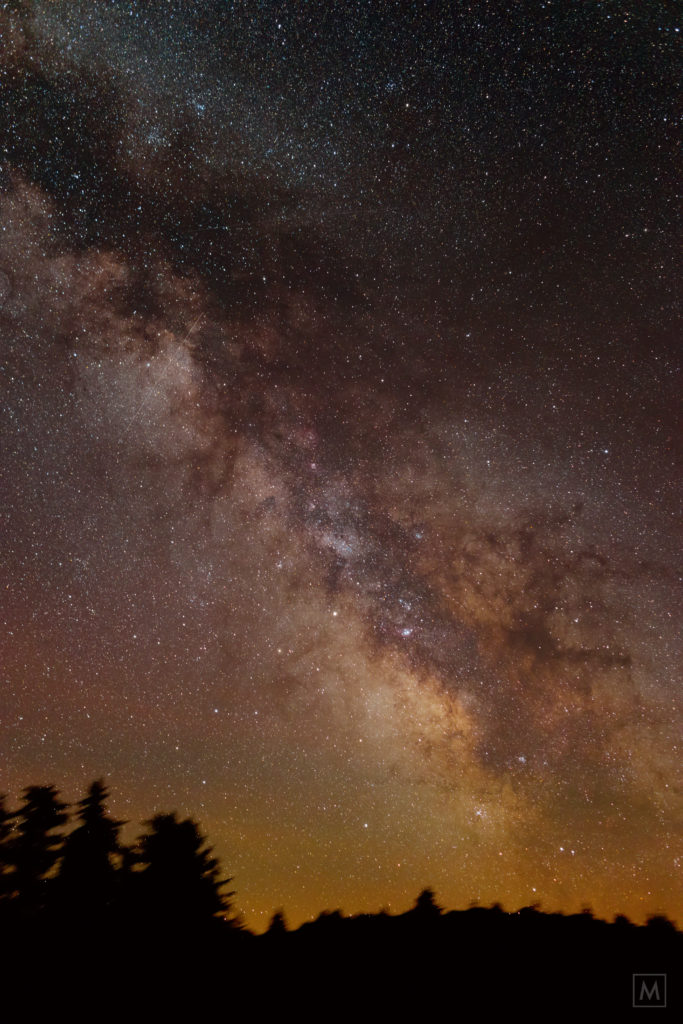Lake Lila in the center of the Adirondacks is a special place to me – I first visited with Greg back in 2001 – we slept on a rock outcropping the first night and then rented kayaks to explore the lake and camp on the far side. Several canoe trips with friends and family followed – always amazing, inspiring, and peaceful.
I had a chance to visit a month ago, when nearby to photograph a timber frame under the stars.
After a long night photographing the bandstand, and a Saturday afternoon working from the Hotel Saranac I drove into Long Lake for a few supplies and then headed to the access road. I did not bring a canoe or kayak, nor tent.
My plan was to walk in along the trail / gated access road to Mt. Frederica and find a good beach or rock outcropping that faced roughly south – southwest. I had a few pins on my GPS, but would need to find a spot in daylight so I could be safe, have room to work, and make sure I had a good view of the Milky Way once it was above the horizon. I walked about 2 miles on the way in, nearly to the end of the lake before backtracking. I spotted a nice beach but it was already occupied by a couple in a canoe, and then bushwhacked to a lovely beach where I found campsite #5, unoccupied.
I use a few different planning apps for night sky and golden hour / blue hour photography – PhotoPills and The Photographer’s Ephemeris are my two most used – but I also check terrain with Google Earth and trails with Ride With GPS or Open Street Map. In the case of Lake Lila I also double checked the map from the NY DEC. All of these combined let me plan my imaging session, and after arriving at the beach I used PhotoPills and the AR function to overlay the night sky on the scene.
I carried in my camera gear, a ground tarp, camp chair, summer sleeping bag, extra layers (not enough!) some snacks, and water. I could have really used an extra layer or two and bug spray and a headset.
I set my tarp on the ground and spread out my gear. Tripod was leveled and I moved some large rocks from the edge of the lake to keep me from mashing it into the sand. I then aligned the Vixen Polarie – which is a little device that can rotate a camera at the same speed as the earth under the stars. This needs to be aligned with the North Star – I use a compass and latitude angle gauge, and SkyWalk2 app on my phone to get it close while the sun was still up. After dark I sighted through the alignment hole and centered Polaris.
After setting up I enjoyed the show of the sun setting, blue hour, and the sky changing.
Golden hour was sublime. The lake calmed, and the color from the sunset (out of view) brought out a nice compliment of the cool water and sky to the trees and rock.
Twilight brought the first stars, and I took a few test shots to make sure focus was set properly and my tracker was aligned to Polaris.
And then I waited. The bugs were fierce and I got cold. I snacked, set an alarm for when the Milky Way would be close to the proper position in case I dozed off, tidied gear, watched the bats, listened to the loons, and waited, and waited. I saw my first glimpse of the Milky Way around 11:20 pm. I took a few more test shots to review.
And then I waited a bit more. At about 12:45 I started my imaging sequence – this is a multi shot panorama of the sky – and I took two 2 minute exposures from the each camera position to stack for noise. All in the final image took over an hour and a half to capture, and is a combination of 27 images – 24 for the sky and 3 for the foreground. The foreground was shot without my sky tracker running, and composited into the image after processing and stitching the background to cover the trees and hills in the distance that were blurred due to the movement of the tracker.
After capturing the images I packed up and walked the 1.5 miles back to the car, took a short nap in the hatchback, made the 8:30 ferry at Essex, NY and was back in VT for breakfast at one of my favorite cafes.







